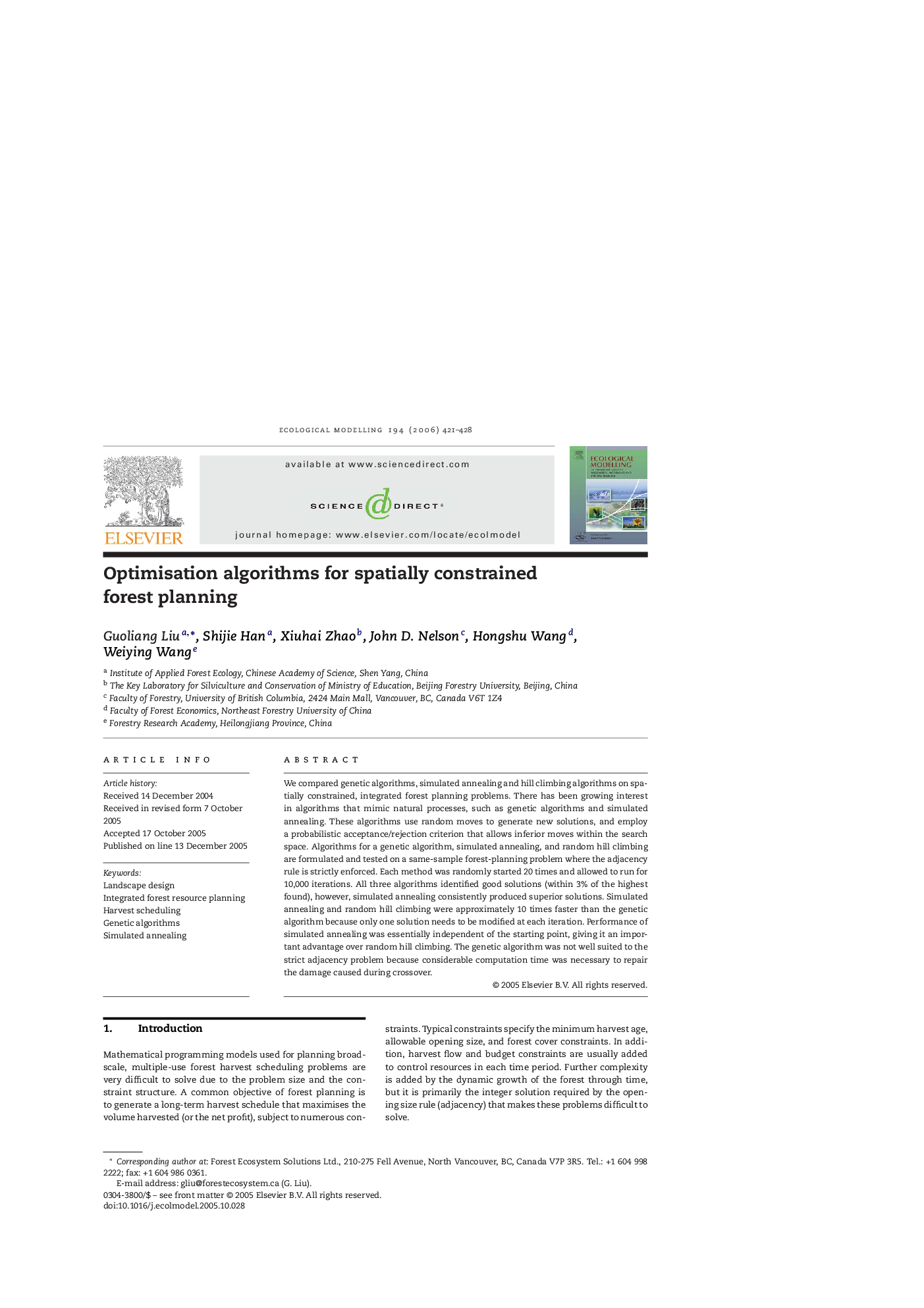| Article ID | Journal | Published Year | Pages | File Type |
|---|---|---|---|---|
| 4379316 | Ecological Modelling | 2006 | 8 Pages |
Abstract
We compared genetic algorithms, simulated annealing and hill climbing algorithms on spatially constrained, integrated forest planning problems. There has been growing interest in algorithms that mimic natural processes, such as genetic algorithms and simulated annealing. These algorithms use random moves to generate new solutions, and employ a probabilistic acceptance/rejection criterion that allows inferior moves within the search space. Algorithms for a genetic algorithm, simulated annealing, and random hill climbing are formulated and tested on a same-sample forest-planning problem where the adjacency rule is strictly enforced. Each method was randomly started 20 times and allowed to run for 10,000 iterations. All three algorithms identified good solutions (within 3% of the highest found), however, simulated annealing consistently produced superior solutions. Simulated annealing and random hill climbing were approximately 10 times faster than the genetic algorithm because only one solution needs to be modified at each iteration. Performance of simulated annealing was essentially independent of the starting point, giving it an important advantage over random hill climbing. The genetic algorithm was not well suited to the strict adjacency problem because considerable computation time was necessary to repair the damage caused during crossover.
Related Topics
Life Sciences
Agricultural and Biological Sciences
Ecology, Evolution, Behavior and Systematics
Authors
Guoliang Liu, Shijie Han, Xiuhai Zhao, John D. Nelson, Hongshu Wang, Weiying Wang,
